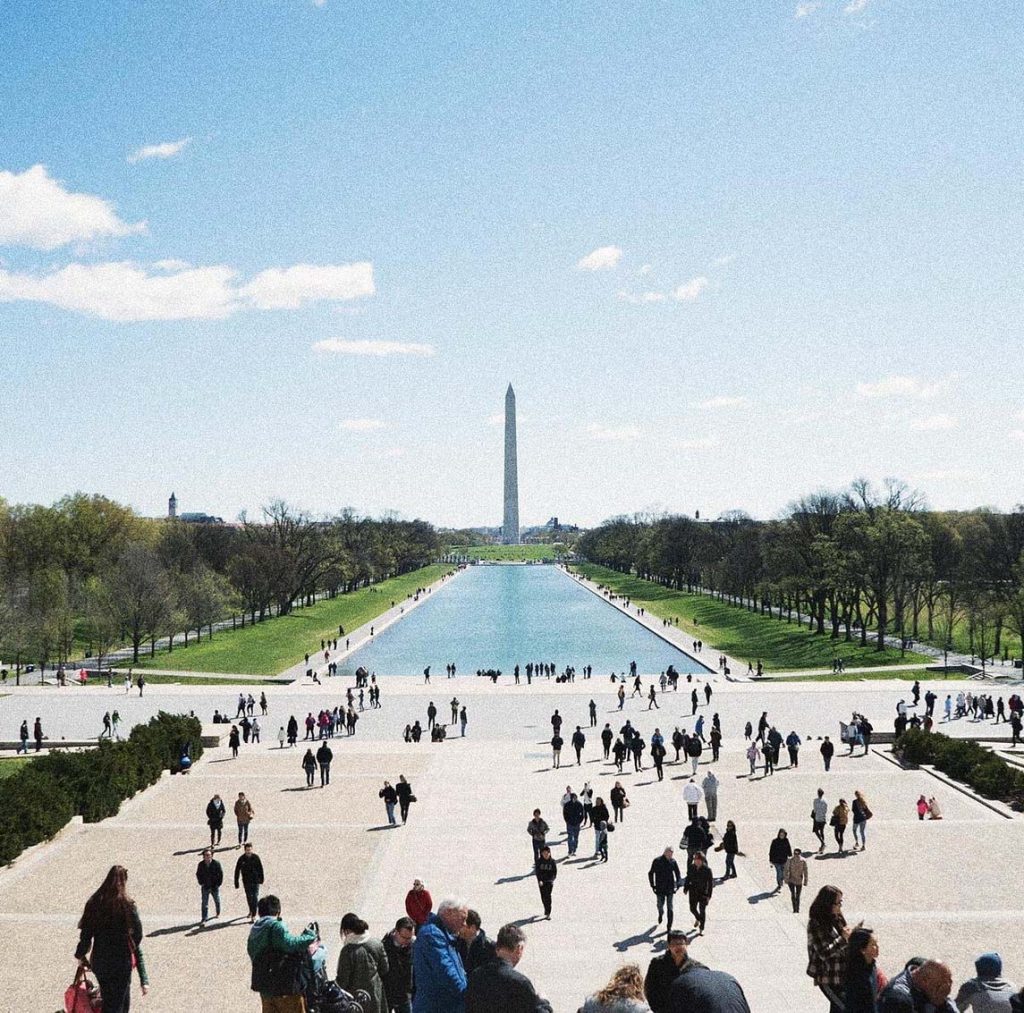Planning a trip to Washington, D.C., can be both exciting and overwhelming with so many iconic landmarks and vibrant neighborhoods to explore. To make the most of your visit, it’s crucial to get your preparations right. Whether you’re drawn to the historic charm of the National Mall or the culinary delights of local eateries, being well-prepared will enhance your experience in the nation’s capital. Let’s dive into the key elements that will set you up for a successful and memorable trip.
1. Pre-Trip Preparation
1. Determine Your Travel Dates and Itinerary
Deciding on your travel dates and itinerary is the first step to planning a successful trip. Washington, D.C., experiences varying climates throughout the year, each with its own charm and activities.
- Spring (March to May): Spring in Washington, D.C., is mild and beautiful, especially with the cherry blossoms in bloom. The Cherry Blossom Festival usually occurs from late March to early April, making it the best time to view these stunning flowers. The mild temperatures are perfect for outdoor activities like visiting the National Mall, exploring museums, and strolling through parks. However, light rain is common in spring, so packing a waterproof jacket is a good idea.
- Summer (June to August): Summers in Washington, D.C., are hot, with temperatures often exceeding 30°C (86°F). Despite the heat, it’s a great time for outdoor activities, such as walking along the Potomac River, taking boat tours, or attending various outdoor concerts. Summer is also peak tourist season, so popular spots like the National Mall and the White House can be crowded. It’s wise to plan your itinerary in advance and book tickets early.
- Fall (September to November): Fall in Washington, D.C., is pleasant with moderate temperatures and beautiful autumn foliage. The fall season is ideal for extended walks and sightseeing. The city hosts various festivals such as Halloween and Thanksgiving, adding to the local atmosphere. In October, the autumn leaves in Washington’s parks and streets are especially picturesque, making it a great time for photography.
- Winter (December to February): Winter in Washington, D.C., is colder, but the city is lively with holiday decorations and events. December features festive markets, light displays, and ice sculptures, creating a romantic and cheerful atmosphere. If you enjoy winter activities or snowy landscapes, Washington’s winter may be mild compared to northern cities but still offers its own seasonal charm.
Once you’ve determined your travel dates, you can plan activities according to the season. For example, if you visit in spring, you might schedule special events like the Cherry Blossom Festival or spring flower shows. If you visit in fall or winter, you can plan to explore holiday markets and winter activities. Planning ahead ensures you make the most of your time in Washington, D.C., and experience the city’s diverse offerings.
2. Choose the Right Accommodation
Accommodation is a crucial part of travel planning, and selecting the right place to stay can greatly enhance your comfort and convenience. Washington, D.C., offers a wide range of accommodation options to suit different budgets and preferences:
- Luxury Hotels: If your budget allows, opt for luxury hotels located in central Washington, D.C. Notable options include The Willard InterContinental, Four Seasons Hotel, and Hilton Washington DC. These hotels not only provide high-quality services but are also close to the National Mall, making sightseeing convenient. Luxury hotels typically offer various amenities such as swimming pools, fitness centers, and spas.
- Mid-Range Hotels: For those with a more modest budget who still seek a comfortable stay, mid-range hotels are a great choice. Numerous mid-range hotels are available in and around downtown Washington, D.C., such as Marriott Hotels and Hilton Hotels. These hotels offer comfortable accommodations and are conveniently located near major attractions, providing good value for money.
- Budget Hotels and Hostels: If you are traveling on a tighter budget, consider budget hotels or hostels. Washington, D.C., has several budget-friendly options like Super 8 and Ibis Hotels. These accommodations provide basic but comfortable lodging at a more affordable price, making them suitable for budget-conscious travelers.
- Short-Term Rentals: For more privacy and flexibility, consider renting a short-term apartment. This option is ideal for families or those staying longer. Platforms like Airbnb and Vrbo offer various comfortable apartments or homes, often with kitchen facilities for self-catering.
When choosing accommodation, consider its location and convenience. Staying near a metro station or major attractions can make travel easier. Check if the hotel offers amenities like breakfast or parking, and ensure it meets your needs. Reading user reviews can also help you make a better choice.
3. Visa and Other Entry Requirements

As an international traveler, ensuring you have valid passport and visa documentation is essential. Depending on your nationality and travel purpose, you might need different types of visas or entry permits. Here are some common entry requirements:
- Passport and Visa: Ensure your passport is valid for at least six months beyond your travel dates. If your country requires a visa to enter the U.S., apply for one in advance. The U.S. visa application process can be complex, so prepare your materials and apply early. The application usually requires a passport, photo, application form, visa fee, and an interview.
- ESTA Application: If you’re from a visa waiver country (e.g., Hong Kong), you may need to apply for an Electronic System for Travel Authorization (ESTA). ESTA is an online travel authorization allowing you to stay in the U.S. for up to 90 days. Applying for ESTA involves providing passport details, personal background information, and travel plans, and paying a fee. Complete the application a few weeks before your trip to avoid delays.
- Vaccinations and Health Checks: Entry requirements may vary based on global health conditions. Check if you need vaccinations or health checks, such as COVID-19 vaccination or test results. Stay updated on the latest health entry requirements to avoid issues upon arrival.
- Insurance and Emergency Contact Information: Purchase travel insurance to cover unexpected situations. Travel insurance typically includes medical coverage, lost luggage insurance, etc. Keep insurance documents and emergency contact information handy in case you need assistance. Ensure you have contact details for emergency contacts in case you need help during your trip.
2. Essential Packing List
1. Travel Documents and Related Papers
Preparing all necessary travel documents and related papers is crucial. These documents include your passport and visa, along with other important materials:
- Passport and Visa: Ensure you carry a valid passport and visa, and bring a copy of each. If your passport is lost or stolen, a copy can serve as a backup. Store copies in different places, such as a hidden pocket in your suitcase, or email them to yourself for easy access.
- Travel Insurance Policy: Travel insurance can provide coverage in case of emergencies, including medical expenses and lost luggage. Purchase insurance before your trip and keep the policy and emergency contact information with you. In case of a medical emergency during your trip, the insurance policy can help cover medical costs.
- Flight Tickets and Accommodation Confirmation: Carry printed or electronic copies of your flight tickets and hotel booking confirmations for check-in and security checks. If your flight or accommodation booking changes, these confirmations can be useful. Store your tickets and confirmations in an easily accessible folder for quick retrieval when needed.
- Emergency Contact Information: Note down the contact details of family or friends for emergencies. Keeping in touch with your family and ensuring they know your travel plans and safety status is important. Also, keep contact details of important contacts such as your travel agency, hotel front desk, or local embassy.
2. Financial Preparation
Financial preparation is essential to ensure you can cover expenses during your trip:
- Cash and Credit Cards: Most places in Washington, D.C., accept credit cards, but carrying some cash for small expenses is wise. Particularly in small shops, markets, or for public transport, cash can be more convenient. Prepare some cash in U.S. dollars for small payments and tips.
- Bank Notifications: If you plan to use credit or debit cards for international transactions, notify your bank or credit card company in advance to avoid your card being locked due to suspected fraud. Banks monitor international transactions, and informing them beforehand can reduce the risk of your transactions being flagged.
- Currency Exchange: You can exchange some U.S. dollars at local banks or currency exchange offices before your trip. Although currency exchange points and banks are available in Washington, D.C., having some cash on hand before arrival can save you the trouble of finding an exchange point.
3. Luggage Preparation
a. Clothing
- Comfortable Walking Shoes: Many attractions in Washington, D.C., require walking, so comfortable shoes are essential. Choose breathable, supportive walking shoes to ensure comfort during extended periods of walking. If you plan to visit upscale venues, consider packing a pair of formal shoes as well.
- Weather-Appropriate Clothing: Pack clothing suitable for the season of your trip. For spring and fall, include light jackets or sweaters to adjust to temperature changes. In summer, pack breathable clothing such as short-sleeve shirts, shorts, and sandals. For winter, include warm coats, sweaters, scarves, and gloves. If engaging in winter sports or activities, additional winter gear is necessary.
- Spring/Fall: Bring a light jacket and layered clothing to adjust to varying temperatures. For instance, a windbreaker and a few long-sleeve shirts can handle the temperature fluctuations in spring and fall.
- Summer: Pack breathable clothing such as short-sleeve shirts, shorts, and sandals. Also, bring a sun hat and sunglasses to protect against strong sunlight. Given the hot weather, choose sweat-wicking and moisture-absorbing fabrics.
- Winter: Include warm coats, sweaters, scarves, gloves, and thermal layers. Winter temperatures in Washington, D.C., can be chilly, so opt for clothing that provides adequate warmth and protection against cold winds.
- Accessories: Depending on the season, pack appropriate accessories. In winter, include a hat, gloves, and a scarf. In summer, bring sunglasses, a hat, and sunscreen. Accessories not only provide protection but also enhance your comfort during various weather conditions.
b. Electronics and Gadgets
- Smartphone and Charger: Essential for navigation, communication, and capturing memories. Ensure your smartphone is fully charged before leaving and bring a charger to keep it powered throughout your trip. Also, consider packing a portable power bank to charge your phone on the go.
- Camera: If you prefer using a dedicated camera instead of your phone for capturing high-quality photos, bring it along. Ensure you pack extra batteries and memory cards to avoid running out of power or storage during your adventures.
- Travel Adapter: The U.S. uses Type A and B plugs with a voltage of 120V. If your devices have different plug types or voltage, a travel adapter or converter is essential. Some travel adapters come with multiple plug options and USB ports, making them versatile for various devices.
c. Personal Items
- Toiletries: Bring essential toiletries, including toothpaste, toothbrush, shampoo, conditioner, body wash, and any specific personal items you use daily. Ensure these items comply with airport security regulations, particularly liquid restrictions. Consider packing travel-sized containers to save space.
- Medications: Carry any necessary prescription medications, along with their original packaging and a copy of the prescription. Keep these in your carry-on bag to ensure they’re easily accessible. If you have any special medical needs, include them in your travel plan and inform your travel insurance provider.
- Reusable Water Bottle: Staying hydrated is important, especially if you plan to explore the city extensively. Bring a reusable water bottle to refill throughout the day. Many public places in Washington, D.C., have water fountains where you can refill your bottle.
d. Miscellaneous Items
- Umbrella: A compact, travel-friendly umbrella is useful for unexpected rain showers. Even if you’re traveling during a season known for less rain, having an umbrella on hand can be a lifesaver during sudden downpours.
- Sunglasses: Protect your eyes from the sun while exploring the city. Pack a pair of sunglasses with UV protection to shield your eyes from harmful rays and enhance visual comfort.
- Guidebook or Map: Although digital maps and guides are readily available, having a physical guidebook or map can be helpful for quick reference, especially if you prefer traditional methods of navigation.
- Snacks: Carry some snacks for convenience during long sightseeing days. Granola bars, nuts, or fruit can provide a quick energy boost and save you time finding food. Snacks are also helpful in situations where food options may be limited or during long commutes.
3. Travel Tips and Insights
1. Navigating Washington, D.C.

Washington, D.C., is well-connected through an extensive public transportation network, including Metro, buses, and ridesharing services. Here are some tips for getting around:
- Metro System: The Washington Metro system is efficient for traveling between neighborhoods and attractions. Purchase a SmarTrip card for convenient fare payments. The Metro operates on an extensive network, making it easy to reach most major landmarks.
- Walking and Biking: Many attractions, such as the National Mall, are within walking distance of each other. The city also has bike-sharing programs like Capital Bikeshare, which are ideal for short trips and sightseeing.
- Ridesharing: Services like Uber and Lyft are widely available and can be convenient for getting to destinations that are not directly accessible by Metro.
2. Safety and Security
Washington, D.C., is generally safe for tourists, but practicing basic safety measures is essential:
- Be Aware of Your Surroundings: Stay alert, especially in crowded areas or when using public transportation. Avoid displaying expensive items openly and be cautious with your belongings.
- Emergency Services: In case of emergencies, dial 911 for immediate assistance. Familiarize yourself with the location of nearby hospitals or emergency services and keep emergency contact information handy.
3. Cultural Etiquette
Respecting local customs and cultural practices enhances your travel experience:
- Politeness and Courtesy: Practice good manners and be courteous to locals and fellow travelers. Washington, D.C., is a diverse city, and showing respect for different cultures and traditions is appreciated.
- Tipping: Tipping is customary in the U.S., generally around 15-20% for service-related industries such as restaurants, taxis, and hotel services. Ensure you tip appropriately based on the level of service provided.
4. Exploring Local Cuisine
Washington, D.C., offers a variety of dining options:
- Local Delicacies: Try local specialties like half-smokes from Ben’s Chili Bowl or visit food markets like Union Market for diverse culinary experiences. Exploring the local food scene adds to your travel experience and allows you to taste unique regional flavors.
- Dining Options: From high-end restaurants to food trucks and casual diners, Washington, D.C., has something for every palate. Plan some dining experiences in advance, especially if you wish to visit popular or highly recommended restaurants.
5. Staying Connected
Staying connected is vital for navigating and sharing your experiences:
- SIM Card or Roaming: Consider getting a local SIM card or international roaming plan to stay connected. Some travelers prefer purchasing a local SIM card upon arrival for better data rates and coverage.
- Wi-Fi Access: Many public spaces and accommodations offer free Wi-Fi. Take advantage of this to stay connected, share updates, and plan your activities.
Packing efficiently and preparing for your trip to Washington, D.C., can significantly enhance your travel experience. By following these tips and packing essentials, you can ensure a smooth and enjoyable journey. Whether you’re exploring historic landmarks, immersing yourself in the city’s culture, or simply enjoying the local cuisine, Washington, D.C., has something for everyone. Safe travels and have a wonderful time in the nation’s capital!





